 Define the Health Topic on How To Be A Complete Hitter
Define the Health Topic on How To Be A Complete Hitter
The GFT (Ground Force Torque) Hitting Approach is a comprehensive method designed to optimize a baseball player's hitting performance. This approach focuses on maximizing ground force production and efficiently transferring that energy through the body to enhance both power and consistency at the plate. Developed through extensive biomechanical research and case studies, the GFT Hitting Approach provides a structured, scientifically-backed framework for improving hitting mechanics.
Explain Its Relevance and Importance on How To Be A Complete Hitter
Hitting a baseball effectively is one of the most challenging skills in sports. It requires not just physical strength and coordination, but a deep understanding of the biomechanics involved in a successful swing. The GFT Hitting Approach addresses these complexities by providing a methodical way to enhance a hitter's ability to generate power and make consistent, solid contact with the ball. This approach is crucial for players at all levels who aim to elevate their performance and achieve success in the game.
Types and Categories: How To Be A Complete Hitter
 Hitting Mechanics
Hitting Mechanics
Understanding and mastering the various components of hitting mechanics is essential for any baseball player. The GFT Hitting Approach breaks down these mechanics into six core components:
- Back Leg Loading
- Foundation of the Swing: The back leg is crucial as it supports the body's weight and initiates the movement. Proper loading of the back leg sets the stage for generating power and stability throughout the swing.
- Torsion and Rotation: Building torsion in the back leg by rotating the thigh externally while keeping the knee and ankle flexed helps to store energy that will be released during the swing.
- Front Leg Timing
- Timing Pitches: The front leg's role is pivotal in timing pitches. Proper timing allows the hitter to adjust to different pitch speeds and locations effectively.
- Ground Force Production: The front leg must optimize rotation and extension to produce the ground force needed to drive the ball. This involves stabilizing the leg as the hips rotate, which contributes to overall power.
- Bat Loading
- Preparing the Arms: This step involves positioning the arms and bat in the optimal stance to engage with hip power effectively. The focus is on ensuring the bat head drops parallel to the ground at the right moment.
- Grip and Arm Positioning: A neutral grip is recommended, with the back elbow positioned behind the back and the front arm reaching back past the back arm's shoulder.
- Lower Body Sequencing
- Energy Transfer: Proper sequencing of the lower body ensures efficient energy transfer from the legs through the hips and into the bat.
- Kinetic Chain: The kinetic chain involves the coordinated movement of body segments to maximize power. The back leg generates ground force, which is transferred through hip rotation, stabilized by the front leg, and then into the upper body.
- Separation Power
- Hip to Shoulder Separation: This involves creating tension between the back hip and shoulder, similar to pulling a rubber band. This tension helps to drive the bat through the zone with maximum power.
- Timing Adjustments: Adjusting the amount of hip to shoulder separation can help hitters adapt to different pitch types and locations, adding flexibility and power to their swings.
- Upper Body Sequencing
- Trunk and Arm Coordination: This phase focuses on optimizing the transfer of energy from the trunk to the arms and bat. The shoulders and elbows play critical roles in guiding the bat to the optimal contact point.
- Linear Bat Path: Maintaining a linear bat path through contact ensures maximum power and accuracy, with the top hand elbow engaging with the back hip to drive the bat through the zone.
 Hitting Drills: How To Be A Complete Hitter
Hitting Drills: How To Be A Complete Hitter
To effectively implement the GFT Hitting Mechanics, a variety of drills are used to develop and refine the necessary skills. These drills focus on different aspects of the swing and are designed to be performed in conjunction with a strength and conditioning program. Some of the key drills include:
- GFT Med Ball Drills - Linear on Knee
- Focuses on developing linear power from a stationary position.
- GFT Med Ball Drills - Linear Full Stride
- Simulates a full stride to enhance coordination and power transfer.
- GFT Med Ball Drills - Linear Momentum
- Adds dynamic movement to train momentum and energy flow.
- GFT Med Ball Drills - Torsion on Knee
- Emphasizes rotational power from a stationary knee position.
- GFT Med Ball Drills - Torsion Full Stride
- Combines rotational power with a full stride for comprehensive training.
- GFT Med Ball Drills - Torsion Momentum
- Integrates dynamic rotational movements to build explosive power.
- GFT Hitting Drills - Linear on Knee
- Focuses on bat path and hand positioning from a stationary knee position.
- GFT Hitting Drills - Linear Full Stride
- Trains proper bat path and energy transfer during a full stride.
- GFT Hitting Drills - Linear Momentum
- Enhances linear bat speed and momentum control.
- GFT Hitting Drills - Torsion on Knee
- Develops rotational bat speed from a stationary knee position.
- GFT Hitting Drills - Torsion Full Stride
- Combines rotational mechanics with a full stride for power hitting.
- GFT Hitting Drills - Torsion Momentum
- Trains dynamic rotational bat speed and control.
 Analysis and Evaluation: How To Be A Complete Hitter
Analysis and Evaluation: How To Be A Complete Hitter
Continuous improvement in hitting mechanics requires regular analysis and evaluation. The GFT Hitting Approach emphasizes the use of video analysis and biomechanical assessments to identify areas for improvement and track progress.
- Video Analysis
- Recording and Reviewing Swings: Capturing swings on video allows players and coaches to identify mechanical flaws and areas for improvement. Slow-motion playback and detailed analysis can highlight subtle issues that might be missed in real-time observation.
- Biomechanical Assessments
- Using Advanced Tools: Tools like force plates and motion capture systems provide detailed insights into the mechanics of the swing. These assessments measure ground reaction forces, joint angles, and muscle activation patterns to give a comprehensive view of the player's biomechanics.
- Customized Feedback: Based on the data collected, customized feedback and training plans can be developed to address specific weaknesses and enhance overall performance.
By incorporating these components and regularly practicing the drills, players can significantly improve their hitting mechanics, power, and consistency at the plate. The GFT Hitting Approach provides a structured, scientifically-backed framework for continuous improvement and success in baseball.
Symptoms and Signs: How To Be A Complete Hitter
 Common Symptoms of Ineffective Hitting Mechanics
Common Symptoms of Ineffective Hitting Mechanics
Identifying issues with hitting mechanics can help players address and correct their weaknesses. Common symptoms of ineffective mechanics include:
- Inconsistent Contact
- Description: Players may find it difficult to make solid contact with the ball consistently, leading to a higher frequency of missed or foul balls.
- Impact: This can result in a lower batting average and reduced on-base percentage, making it harder for the player to contribute offensively to their team.
- Lack of Power
- Description: Players may struggle to drive the ball with force, resulting in weak hits that are easily fielded by the defense.
- Impact: This can lead to fewer extra-base hits (doubles, triples, home runs) and a lower slugging percentage, which diminishes the player’s ability to change the game with a single swing.
- Poor Timing
- Description: Players may frequently be late or early on pitches, leading to inconsistent contact and poor at-bats.
- Impact: Poor timing can reduce a player’s ability to hit for average and power, as well as make it difficult to adjust to different types of pitches (fastballs, breaking balls, off-speed pitches).
- Frequent Pop-Ups or Ground Balls
- Description: Poor contact often results in a high number of pop-ups or ground balls, rather than line drives or fly balls with good carry.
- Impact: These types of hits are easier for the defense to field, reducing the player’s chances of reaching base and contributing to their team’s offensive efforts.
- Physical Discomfort or Injuries
- Description: Players may experience pain or discomfort while hitting, which can be a sign of poor mechanics or overuse.
- Impact: Physical discomfort can lead to more serious injuries if not addressed, potentially sidelining the player and affecting their overall performance and career longevity.
 Uncommon Symptoms
Uncommon Symptoms
Less common but still important symptoms to be aware of include:
- Chronic Performance Slumps
- Description: Extended periods of poor performance at the plate, where a player’s hitting statistics drop significantly over time.
- Impact: Chronic slumps can erode a player’s confidence and make it difficult for them to regain their form. It can also impact their standing with the team and lead to less playing time.
- Unusual Swing Path
- Description: A swing path that deviates significantly from the norm, such as an excessively steep or flat swing.
- Impact: An unusual swing path can lead to inconsistent contact, poor power production, and an increased likelihood of hitting into outs. It can also make it harder to adjust to different pitch types and locations.
- Loss of Confidence at the Plate
- Description: Mental challenges affecting performance, where a player may feel unsure or hesitant when batting.
- Impact: A loss of confidence can be just as damaging as physical issues, leading to a lack of aggressiveness and a passive approach at the plate. This can further compound mechanical issues and result in a downward spiral of performance.
By recognizing and addressing these symptoms, players can take steps to correct their mechanics and improve their overall performance at the plate. This might involve working with a hitting coach, reviewing video analysis, or engaging in targeted drills designed to enhance specific aspects of their swing.
Causes and Risk Factors: How To Be A Complete Hitter
 Biological Factors: How To Be A Complete Hitter
Biological Factors: How To Be A Complete Hitter
Various biological factors can influence a player's hitting mechanics and performance:
- Muscle Strength and Flexibility
- Importance: Muscle strength and flexibility are crucial for generating power and maintaining proper mechanics throughout the swing. Strong muscles in the legs, core, and upper body enable a player to generate the necessary force to drive the ball. Flexibility, on the other hand, allows for a full range of motion, which is essential for a smooth and efficient swing.
- Impact: Players with well-developed muscle strength and flexibility are more likely to produce powerful hits and maintain consistent mechanics. Conversely, weaknesses or imbalances in these areas can lead to reduced power, increased risk of injury, and mechanical flaws.
- Coordination and Balance
- Importance: Coordination and balance are critical for timing the swing and making consistent contact with the ball. Coordination involves the ability to synchronize body movements efficiently, while balance ensures stability throughout the swing.
- Impact: Players with good coordination and balance can adjust to different pitch speeds and locations, maintaining control and precision in their swings. Poor coordination and balance can lead to mistimed swings, inconsistent contact, and a higher likelihood of striking out.
 Environmental Factors: How To Be A Complete Hitter
Environmental Factors: How To Be A Complete Hitter
External conditions can also impact hitting performance:
- Playing Conditions
- Weather: Weather conditions such as wind, rain, and temperature can affect a player's performance. For example, cold weather can make it harder to grip the bat, while strong winds can influence the trajectory of the ball.
- Field Conditions: The quality of the playing surface, including the condition of the grass or turf, can impact footing and stability during the swing.
- Lighting: Poor lighting, whether from natural or artificial sources, can affect a player’s ability to see the ball clearly, leading to mistimed or missed swings.
- Equipment Quality
- Bats: The quality and type of bat used can significantly affect performance. Bats made from different materials (wood, aluminum, composite) offer varying levels of durability, weight distribution, and "pop" (the bat’s ability to drive the ball).
- Gloves and Gear: Proper fitting and well-maintained gloves and protective gear ensure that players can perform at their best without discomfort or distraction.
 Lifestyle Factors: How To Be A Complete Hitter
Lifestyle Factors: How To Be A Complete Hitter
A player's lifestyle and habits play a significant role in their hitting performance:
- Training Regimen
- Consistency: Regular and focused training is essential for continuous improvement. A well-structured training regimen includes batting practice, strength training, and conditioning exercises tailored to enhance hitting mechanics.
- Specificity: Training programs should be specific to the needs of the player, addressing areas such as bat speed, hand-eye coordination, and reaction time.
- Nutritional Habits
- Balanced Diet: Proper nutrition supports overall physical health and provides the energy needed for optimal performance. A diet rich in proteins, carbohydrates, fats, vitamins, and minerals ensures that players have the necessary nutrients to build muscle, recover from workouts, and maintain stamina.
- Hydration: Staying hydrated is crucial, especially during games and training sessions, to maintain peak performance and prevent fatigue.
- Rest and Recovery Practices
- Adequate Sleep: Ensuring sufficient sleep is vital for physical recovery, cognitive function, and overall well-being. Lack of sleep can lead to decreased performance, slower reaction times, and a higher risk of injury.
- Recovery Techniques: Incorporating rest days, stretching, foam rolling, and other recovery techniques helps to prevent overuse injuries and ensures that players are physically prepared for intense training and competition.
By understanding and addressing these biological, environmental, and lifestyle factors, players can optimize their hitting mechanics and performance. This comprehensive approach not only enhances their current abilities but also helps in preventing injuries and ensuring long-term success in their baseball careers.
Diagnosis and Tests: How To Be A Complete Hitter
 Common Diagnostic Tools: How To Be A Complete Hitter
Common Diagnostic Tools: How To Be A Complete Hitter
To accurately diagnose and address hitting mechanics issues, various diagnostic tools are used. These tools provide detailed insights into a player's swing, allowing coaches and players to make informed adjustments to improve performance.
- Video Analysis
- Description: Video analysis involves recording a player's swing from multiple angles using high-speed cameras. This footage is then reviewed in slow motion or frame-by-frame to identify mechanical flaws and areas for improvement.
- Benefits: Video analysis allows players and coaches to visually pinpoint issues such as improper bat path, poor body alignment, and timing problems. By comparing video footage over time, progress can be tracked, and adjustments can be made to enhance mechanics.
- Implementation: Typically, video analysis sessions are conducted during practice or games. The recorded footage is analyzed using software that can provide measurements and annotations to highlight key aspects of the swing.
- Motion Capture Systems
- Description: Motion capture systems use sensors attached to the player's body to capture detailed data on their movements. This technology tracks the position and motion of each body part during the swing, creating a 3D model of the player's biomechanics.
- Benefits: Motion capture provides precise and comprehensive data on joint angles, rotational velocities, and timing sequences. This information is invaluable for understanding the complex interactions between different body parts during the swing.
- Implementation: Players wear specialized suits with sensors, and their swings are recorded in a controlled environment. The data collected is then processed using advanced software to generate detailed biomechanical reports.
 Tests Used: How To Be A Complete Hitter
Tests Used: How To Be A Complete Hitter
Specific tests help in understanding and improving hitting mechanics. These tests provide quantitative data that can be used to optimize a player's performance by addressing specific mechanical issues.
- Force Plate Analysis
- Description: Force plate analysis involves standing on a force plate while performing a swing. The force plate measures the ground reaction forces generated by the player during the swing.
- Benefits: This analysis helps to determine how effectively a player uses their lower body to generate power. It provides insights into the timing and magnitude of ground force production, which are critical for maximizing swing efficiency.
- Implementation: Force plates are typically integrated into the floor of a batting cage or training facility. Players perform their swings as usual, and the force plates capture data on the forces exerted by their feet. This data is analyzed to identify imbalances or inefficiencies in ground force production.
- Biomechanical Assessments
- Description: Biomechanical assessments involve a comprehensive analysis of the player's body movements during the swing. This includes measurements of joint angles, muscle activation patterns, and segmental velocities.
- Benefits: These assessments provide a detailed understanding of the player's biomechanics, highlighting strengths and weaknesses in their swing mechanics. This information is essential for developing targeted training programs to improve performance.
- Implementation: Biomechanical assessments are typically conducted in specialized labs equipped with motion capture systems, force plates, and other advanced technologies. Players perform swings under the observation of biomechanists, who then analyze the data to provide detailed feedback and recommendations.
By utilizing these diagnostic tools and tests, coaches and players can gain a deeper understanding of the mechanics behind a successful swing. This data-driven approach enables more precise and effective training interventions, leading to improved performance and reduced risk of injury. Regular diagnosis and testing are crucial for ongoing development and refinement of hitting mechanics, ensuring that players continue to progress and achieve their full potential.
GFT Hitting Program with King of the Swing: Your Path to Becoming a Complete Hitter
 The GFT (Ground Force Torque) Hitting Program, in conjunction with the revolutionary King of the Swing hitting trainer, offers a comprehensive solution for players aspiring to become complete hitters. This program is designed to enhance every aspect of your hitting mechanics through scientifically-backed methods and advanced training tools.
The GFT (Ground Force Torque) Hitting Program, in conjunction with the revolutionary King of the Swing hitting trainer, offers a comprehensive solution for players aspiring to become complete hitters. This program is designed to enhance every aspect of your hitting mechanics through scientifically-backed methods and advanced training tools.
King of the Swing: The Ultimate Training Tool
The King of the Swing hitting trainer is an integral part of the GFT Hitting Program. This innovative tool provides real-time feedback on ground force production and swing mechanics, helping players to develop and refine their skills effectively.
Key Features of King of the Swing:
- Real-Time Feedback: Immediate insights into your swing mechanics and ground force production.
- Enhanced Training: Focuses on optimizing the power transfer from the lower body to the upper body.
- Versatility: Can be used in various drills to target different aspects of hitting mechanics.
The combination of the GFT Hitting Program and the King of the Swing ensures that players systematically improve their hitting mechanics, resulting in a powerful, consistent, and efficient swing.
Becoming a Complete Hitter
The GFT Hitting Program with King of the Swing is more than just a training regimen; it’s a comprehensive approach to mastering the art of hitting. By following this program, you will:
- Improve Consistency: Refine your mechanics to make solid contact more frequently.
- Increase Power: Maximize your ground force production and energy transfer for more powerful hits.
- Enhance Timing: Develop better timing to handle various pitch types and speeds.
- Prevent Injuries: Learn proper mechanics that reduce the risk of injuries and ensure long-term success.
Get Started Today
To learn more about the GFT Hitting Program and start your journey to becoming a complete hitter, visit TopVelocity.net/gft. This program is your pathway to achieving your full potential at the plate, combining the latest in biomechanical research with cutting-edge training tools.
Conclusion
Summary of Key Points
The GFT Hitting Approach is a comprehensive method designed to enhance hitting performance by focusing on biomechanical efficiency and ground force production. By mastering the core mechanics and regularly practicing the drills outlined in this guide, players can significantly improve their power and consistency at the plate.
For more detailed information and personalized training programs, visit TopVelocity.net and explore the various resources available to help you master the GFT Hitting Approach.


 Hitting Mechanics
Hitting Mechanics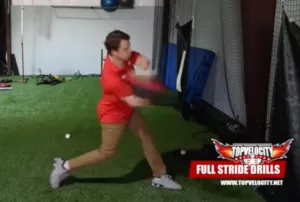 Hitting Drills: How To Be A Complete Hitter
Hitting Drills: How To Be A Complete Hitter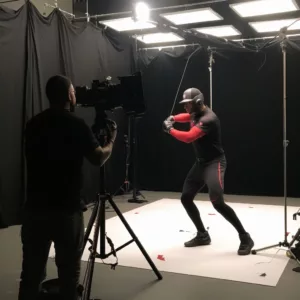 Analysis and Evaluation: How To Be A Complete Hitter
Analysis and Evaluation: How To Be A Complete Hitter Common Symptoms of Ineffective Hitting Mechanics
Common Symptoms of Ineffective Hitting Mechanics Uncommon Symptoms
Uncommon Symptoms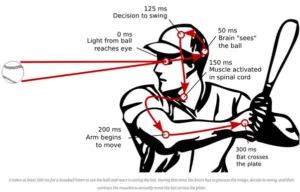 Biological Factors: How To Be A Complete Hitter
Biological Factors: How To Be A Complete Hitter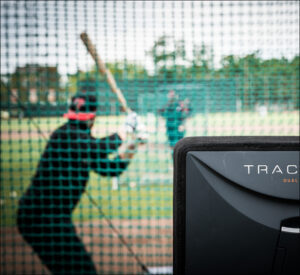 Environmental Factors: How To Be A Complete Hitter
Environmental Factors: How To Be A Complete Hitter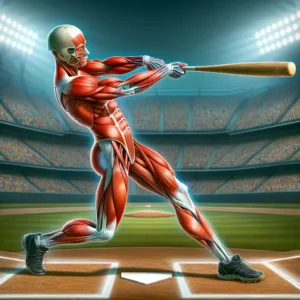 Lifestyle Factors: How To Be A Complete Hitter
Lifestyle Factors: How To Be A Complete Hitter Common Diagnostic Tools: How To Be A Complete Hitter
Common Diagnostic Tools: How To Be A Complete Hitter Tests Used: How To Be A Complete Hitter
Tests Used: How To Be A Complete Hitter

